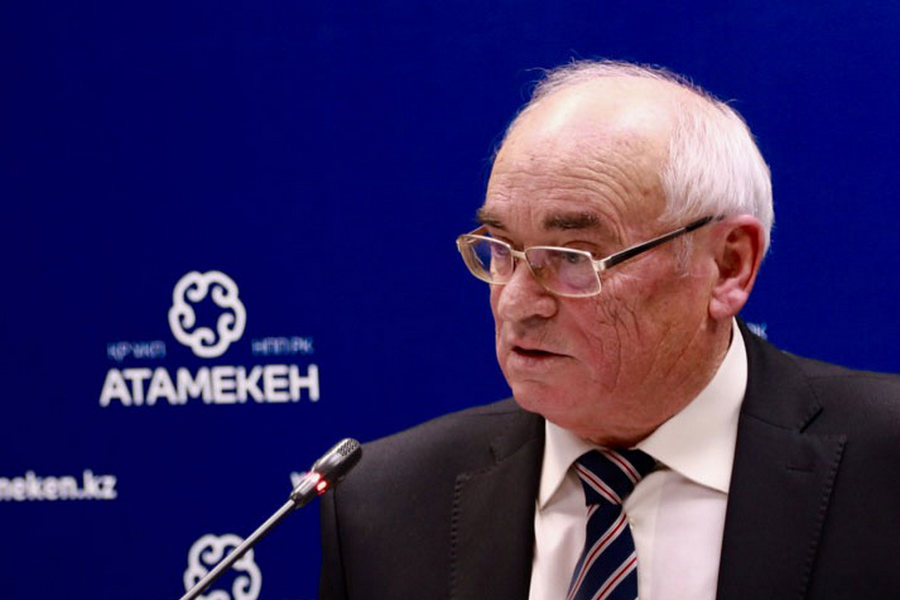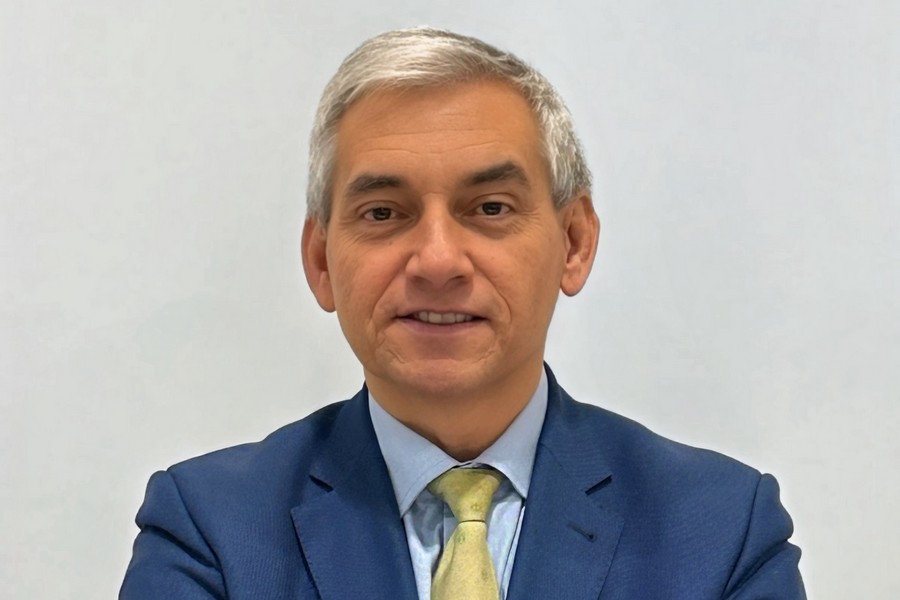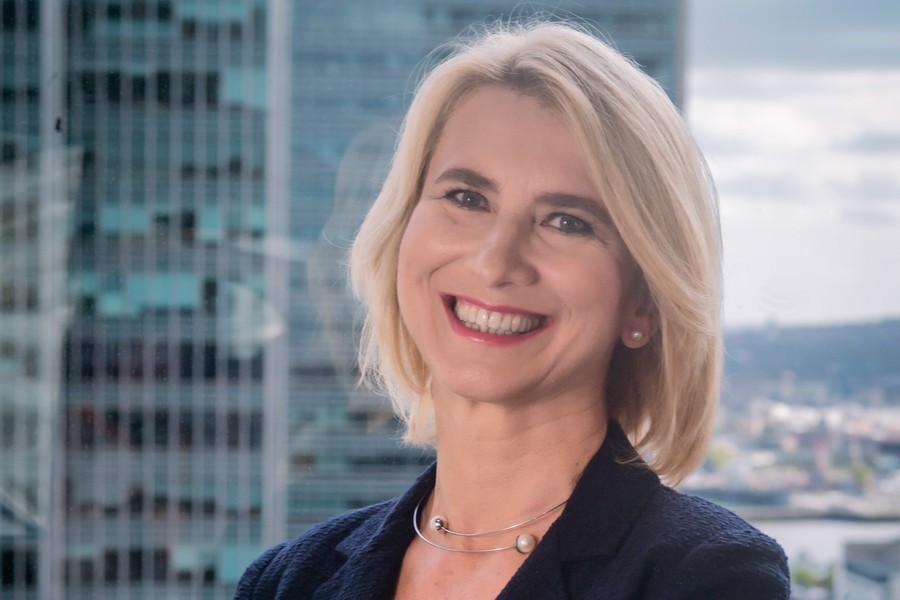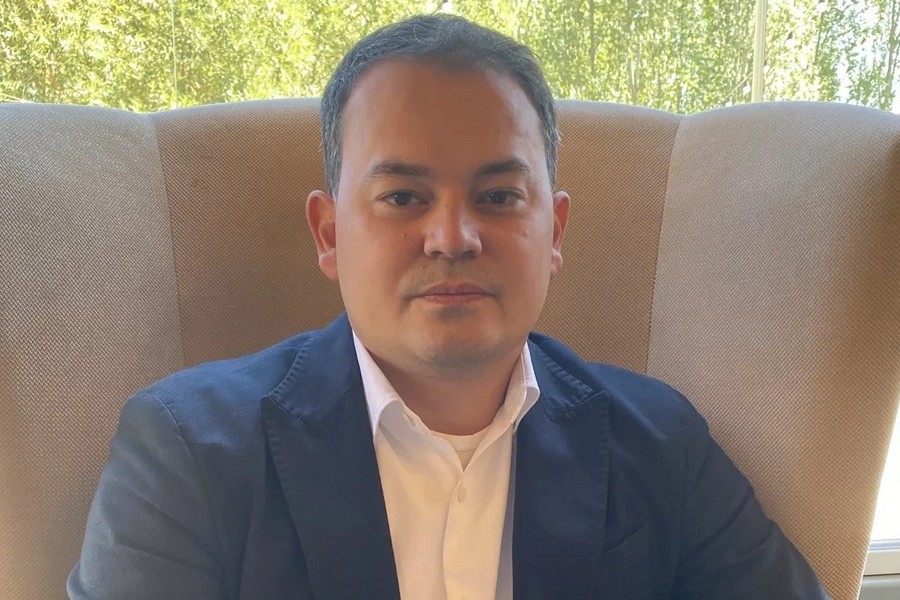Energy Minister Kanat BOZUMBAYEV:
AN AGREEMENT ON A DISPUTE SETTLEMENT WITH THE KPO CONSORTIUM WILL COME INTO FORCE IN JULY 2019
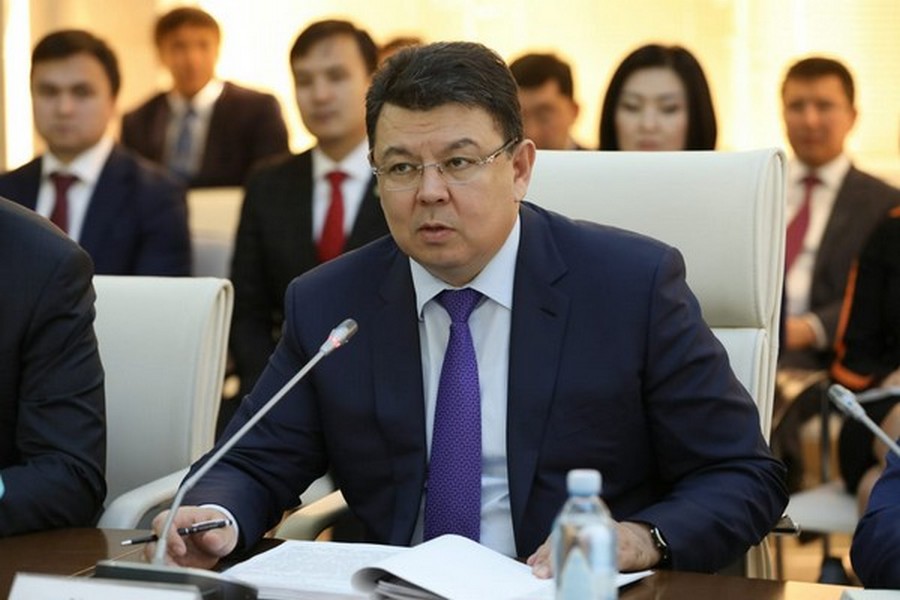
The project to increase production at Kashagan can be implemented less expensively, but within the previously agreed deadline, and the signing of an agreement to resolve the dispute with the Karachaganak consortium is scheduled for January. Energy Minister Kanat BOZUMBAYEV talked to Interfax-Kazakhstan about how the country's oil and gas sector will develop and the prospects for commercial gas production growth beyond 2025.
- Kanat Aldabergenovich, you recently said that in the first quarter of 2019 you will announce a new concept for the further expansion of the Kashagan field. How have the plans of the NCOC consortium, which has been developing the field, changed? According to the field development concept, which was announced in 2016, the gas re-injection project Compression Center - 01 (CK-01) was to be implemented within five years, from 2019- 2024. According to its results, production at Kashagan has to increase from 370,000 to 450,000 barrels a day.
- There used to be approved concept CK-01, under which the construction of a new artificial island for two gas re-injection compressors was envisaged. This would allow for 450,000 barrels a day of output of 2023-2024. However, taking into account current oil prices and geological data such as formation permeability, the operator [the NCOC consortium] is optimizing this concept and is currently working on increasing the gas re-injection volume. That is, it wants to simplify and make CK-01 less expensive without building the new artificial island. Now engineering studies are already underway, we are at the stage of choosing a concept, but the project implementation timeline remain the same for the time being, that is production of 450,000 barrels a day is envisaged for 2023-2024.
- Now stable production of 330,000 barrels a day has been achieved at Kashagan. When is it planned to reach the level of 370,000 barrels per day?
- In the second half of 2019.
- Is it possible to expect an increase in oil shipments to the domestic market from January 2019, from which resources and to which refineries? Will the cost of raw crude be made closer to export netback?
- Yes, the increase in oil supplies to the domestic market will be from 2019, the annual schedule has been signed. From what resources? One and the same resources, all the oil companies, except for the Kashagan, Karachaganak and Tengiz fields. But in the future, we plan to attract their oil too, because Kyzylorda and Aktobe see falling production.
Supplies to the Atyrau plant will increase; Mangistau and Atyrau companies [will secure raw crude]. Similarly to PKOP [the Shymkent oil refinery] - oil from Kyzylorda and Aktobe regions; to Pavlodar [plant] (the Pavlodar oil refinery) - these will be the Western and all other companies, [which] will be tasked with replacing [objectives].
We will seek to get closer to export netback, but it’s not very realistic to get too close. We already reached $ 30-$35 a barrel through the cost of raw crude oil [in the domestic market], if we reach $ 40 a barrel [in the domestic market], that will be fine. I think taking into account the new output [oil products at Kazakhstan-based refineries] and increased depth processing the yield at the refineries should go up. Plus, we will still have export opportunities [on petroleum products, gasoline], prices will not be capped there. Therefore, the yield will have to grow for oil producers at the expense of a window of export opportunity.
We do not expect a rapid rise in prices for petroleum products in the country. As you know, we have gasoline overproduction, and balance regarding diesel [the indicative balance on fuel and lubricants with regard to Russia]. On diesel I said, we will tighten the borders (to stop the outflow of diesel fuel to the neighboring states].
- You say that shipments will increase using previous resources. Is this possible given falling production at the mature oil fields?
- Probably. There will be problems in Shymkent [with crude oil shipments to the Shymkent refinery] but we are currently working on the project called Kenkiyak-Atyrau Pipeline Reverse [completion planned for 2019]. This will help ship 6 million tonnes of oil from the west of the country to Turkestan region. Therefore in a year and a half we will make it, for the time being we will work in current mode.
- Do you plan to fill the capacity of JSC Kondensat’s plant? More resources are said to be shipped there.
- JSC Kondensat is operating stably, in late [last] year it had already processed a quite crude amount, produced class K-5 petroleum products.
It just began work [last] autumn, so the plant started with small volumes – 15,000–20,000 tonnes of raw crude per month to process. Maybe it is already processing now 50,000-60,000 a month. That’s OK, let it practice. This year we will fill its capacity further. This year it will have a window of opportunity related to Karachaganak. This is due to unstable gas condensate, which was previously stabilized at the Orenburg gas processing plant (GPP).
There used to be a contract for 800,000 tonnes [with the Orenburg GPP]. At the Orenburg GPP there is an individual; part of the plant’s shares belongs to Gazprom, part to the individual. This individual owner used to receive 800,000 tonnes of raw gas at reduced prices annually and stabilized condensate for the needs of KPO [Karachaganak Petroleum Operating consortium, operator of the Karachaganak field]. Now KPO is going to stabilize it itself, and what it cannot, will ship to JSC Kondensat’s plant. Therefore, this plant will have a scope of work; it will probably start nearer the spring.
It means, JSC Kondensat will increase processing. Products will be various, not only gasoline, diesel fuel, but also naphtha can be produced. That’s also good, it’s possible to ship naphtha to the Atyrau Refinery to finish it, it is oily, good. Even a mini-refinery “finished off” it and obtained diesel.
-According to KazMunayGas' estimates, upon completion of an upgrade to the three refineries, Kazakhstan would have the opportunity to export 1.2 million tonnes of gasoline in 2019. What export volume can be actually expected in 2019?
- We can export to where we want. Now we must ratify an agreement with Russia [on trade and economic cooperation regarding oil and oil products shipments]. The agreement is already with the Majilis [the lower chamber of Kazakhstan's parliament], January is the Majilis, February is the Senate [the upper chamber of Kazakhstan's parliament]. I hope there will be no problems. We can sell outside the Customs Union. To Kyrgyzstan, well, I hope, in the first half of January we will sign [an agreement on exports].
- Did you calculate what export volume could be in 2019?
- Thankless task to calculate. First it's necessary to negotiate volumes. Plus Kyrgyzstan is not such a big market. Uzbekistan and Afghanistan, and Tajikistan are of interest to us; here is the sphere of our interests. There negotiations are not even in the early stages. We will discuss these issues with Uzbekneftegaz after this interview.
We will start shipments to Kyrgyzstan with a small volume, and then we'll see. There are the well-established market over there, our partners - Gazprom, Lukoil. If we go there, then, not to break but compete in a fair fight.
We will sign an agreement at first [on trade and economic cooperation regarding oil and oil products shipments between Kazakhstan and Kyrgyzstan] . The agreement will set out that we, the three parties - Kyrgyzstan, Kazakhstan, Russia - will make a joint indicative balance. There all volumes will be spelled out. If we ship 300,000-400,000 tonnes of gasoline to Kyrgyzstan annually, that's fine. We would export at commercial prices to their market. The difference between the prices of gasoline in Kazakhstan and Kyrgyzstan is big, approximately from 30 to 70 tenge per liter for different types of petroleum products (376.06 tenge/$1).
- Earlier you said that by the end of the year you would sign a settlement agreement with the Karachaganak Petroleum Operating consortium but there was no news.
- The agreement will probably be signed in January. [Experts] worked hard on the agreement wording in December. This is due to legal nuances; we do not see any problems. The participants in the KPO consortium close their risks through lawyers, and lawyers, as usual, want to include a lot there but the Finance Ministry is against a little bit. Therefore we held meetings and meetings together with the Finance Ministry, Energy Ministry and representatives of the contracting companies. Practically all issues were agreed upon, now we will draw up [everything] in January. The Settlement Agreement (SA) will enter into force anyway from July 1. The Agreement on the Settlement Principles reads so. We will not shift the deadline because if the deadline moves, it means that we will agree again. It is not allowed to shift the terms, the cost of money would change and so on. And thereafter KPO would pay the first portion of compensation that is in my opinion $ 400 million [the total amount is $ 1.1 billion].
- What changes have been made to the production sharing mechanism for the Final Production Sharing Agreement on Karachaganak?
- They are not made, when we sign the SA, then I will tell you. There are seven components (...), we agreed on the three. This is an open issue, we see no problems. There are a million nuances over there, we are still in arbitration. When in arbitration, you are limited [in terms of comments].
- The consortium promises to invest $ 5 billion in the future development of the Karachaganak field. Of this amount $ 1.1 billion is a project to remove gas production restrictions (FOG). What other projects are included in these $ 5 billion?
- Two more projects. Three projects, they are clearly compiled. The names, the approximate volumes are available. These are the projects for maintaining the oil rate-plateau: the project on lifting gas production restrictions at KPC (Karachaganak processing complex) (KGDBN Project); the project on building the 4th gas reinjection pumping compressor at Gas Treatment Unit-2 (gas and liquid hydrocarbon separation and gas re-injection); project on building the 5th main gas injection line and three gas re-injection wells.
It is needed in order to maintain the achieved level of hydrocarbon production of 11 million tonnes a year until 2023-2025. The commissioning is expected in 2020-2021. They are already preparing a design. This year there will be already tenders, physical work will begin.
- Is a decision not yet made on the Karachaganak future expansion [project]?
- No, there is no expansion concept yet. These $ 5 billion are about the oil rate-plateau. $ 5 billion - not enough for expansion.
- That is, is it still necessary to devise a project for further expansion?
- Yes, they are conceptually working on it currently.
- As far as the Karachaganak expansion is concerned, if I understand it correctly, they will have to choose whether to increase oil production or increase gas production?
- Absolutely correct. To reduce [gas] re-injection and, perhaps, increase gas exports. If this does not affect liquid hydrocarbons losses then this issue could also be examined. There are two terms on which this is possible.
First: at the time of reducing re-injection it is important that the country and they not lose liquid hydrocarbons so that they can be extracted later. And second: the cost of gas. If netback is better for gas than for condensate, of course, business will choose the latter.
- Let’s continue with the gas topic, there are agreements to increase gas exports to China to 10 billion cubic meters. From which resources and whether is there a capacity for stable shipments?
- Tengiz, Kashagan, Aktobemunaygas, mainly here are they.
In 2018, gas production amounted to 54.8 billion cubic meters. [This] year production will rise. Therefore I think that everything will be OK.
If in 2018 54.8 billion cubic meters were produced, of them 33 billion are commercial gas. Of these 33 billion cubic meters, exports are 19 billion cubic meters. It means that 14 billion cubic meters remain in the domestic market. That’s fine. There has always been approximately parity, now we increased exports.
- And how will the situation change with the launch of the Saryarka gas pipeline?
- There is 1 billion cubic meters in total. Then it’s necessary to reach 1 billion step by step. Astana is to consume at least 300 million cubic meters for a start. Gas distribution to the regions is neither a quick process. One should be an absolutely naive person in order to think that within two years it is possible to provide a gas distribution network for the two regions all along plus the entire capital. This is huge capital investment. First of all, it is necessary to provide gas supply distribution network for everything that smokes and pollutes the environment - the private sector and water boilers at combined heat and power plants.
- Therein it is forecast that gas consumption in Kazakhstan will increase. Can our industry keep up with the trend?
- Of course, until 2025, yes. Then we will decide on Karachaganak, Kashagan, Tengiz and so on.
- What plans does the ministry have for 2019? We know you will prepare the Environmental Code, maybe, are any other bills planned?
- We plan to ratify an agreement with Russia, which will allow us to export petroleum products.
In the nuclear field there will be one bill related to the insurance of risks against nuclear installations. There are the IAEA standard requirements for countries with nuclear facilities, we have three . Plus, we will have the IAEA Bank of Low Enriched Uranium so we must do this in order to meet the Western standards. The bank has not yet been set up. In order to deploy low-enriched uranium to the bank, this law needs to be passed.
We will make amendments to the Law on Circulation of Petroleum Products, this is related to exports. We currently have no remit to regulate petroleum products exports because we have never exported them. Now it will be set up.
Probably we will amend the Law on Electric Power Industry, there are nuances related to the capacity market introduction, it is necessary to rectify gaps.
- What is the uranium mining forecast for Kazakhstan in 2019? Will the mining also decline?
- We will say clearly later in January. For now, we will probably maintain production at the 2018 level.
- But is there a tendency that there will be a slight decrease?
- Well, the price is good, $ 29 already.
- In Kazakhstan, production is falling at small oil fields...
- What small ones, Aktobemunaygas, or what? There are almost no small ones, all are major fields in Aktobe region. Or in Kyzylorda, with regard to PetroKazakhstan, what small ones are there, they are major. They are just at a late stage of production, mature oil fields. If they had increased capital expenditures, had drilled more, pumped in like Karazhanbas, then, probably, production would have fallen more slowly. It's possible to pump in water or steam, perform hydraulic fracturing.
Unfortunately, they do not earn enough to spend such amounts [on investment projects] because they provide 60% of produced oil for the domestic market. On the domestic market they get $ 30 a barrel, this is not enough to invest well. Of course, these enterprises ship 40% of produced oil for export, understandably, but not enough anyway. For them, of course, it is necessary to create some conditions; they are sensitive to the domestic market profitability. No one wants to lose the domestic market profitability, but at the same time it is necessary to secure the domestic market, there must be discipline.
- What contracts and Product Sharing Agreements are expiring , which companies want to have them extended?
- Dunga wants already now. This is the Dunga field, the subsoil user Maersk Oil, its shareholders are Total and Oman Oil. They want to renew, we are in very hot negotiations. That is, in fact, any renewal, if it is a large field, it is generally a new contract. There are important points for the extension such as the tax regime and other things.
- Thank you for the interview!
January, 2019
© 2025 Interfax-Kazakhstan news agency
Copying and use of these materials without reference to the source is prohibited
Archive

